279 posts
Latest Posts by science-is-magical - Page 8


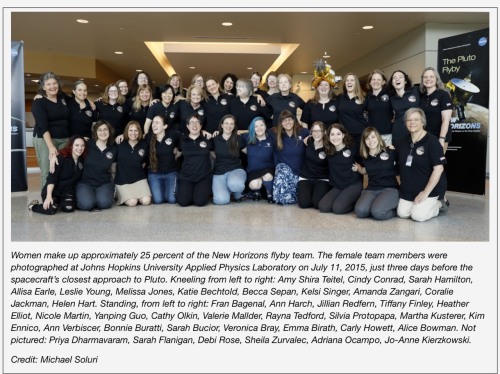
Women scientists made up 25% of the Pluto fly-by New Horizon team. Make sure you share this, because erasing women’s achievements in science and history is a tradition. Happens every day.
.
http://pluto.jhuapl.edu/News-Center/News-Article.php?page=20150712
Here are 17 jaw-dropping photos of space that show us just how small we really are:
This photo of the moon and Earth taken from the International Space Station.

A dwarf galaxy, about 11 million light-years away from us.

Earth as seen from the moon in 1968.

A cluster of stars, 20,000 light-years away from Earth.

The first flower grown in the International Space Station, photographed by astronaut Scott Kelly.

Saturn, seen through an infared filter.

These visible “loops” on the surface of the sun can reach up to 15 times the diameter of Earth in height.

The Northen Lights just North of Chicago, viewed from the International Space Station.

The Quintuplet Cluster, located 100 light-years from the center of our galaxy.

Pluto and one of its moons, Charon.

The Great Pyramids of Giza, seen from space.

Astronaut Bruce McCandless maneuvering, untethered, above Earth in 1984.

Galaxy NGC 6240, 400 million light-years away from Earth.

Palomar 12, a cluster of stars on the outskirts of the Milky Way.

The remnants of an exploded star.

New York City, seen from the International Space Station.

And the remains of a supernova whose explosion may have been seen almost 2,000 years ago by Chinese astronomers.
Follow @the-future-now
cyanobacterium: i have made Oxygen
chemotrophs: you fucked up a perfectly good planet is what you did. look at it. it’s all rusty

Slime mold was grown on an agar gel plate shaped like America and food sources were placed where America’s large cities are.
The result? A possible look at how to best build public transportation.
I just really like the idea of slime mold on a map of the US. It’s beautiful.
hey guys i think i got a pretty nice tan over the summer, what do you think?
before:

after:



Fascinating, even if you are unable to grasp the mathematical depths, details are for professional thinkers on the field, enjoy the surface, is pretty enjoyable too.
Mathematicians Bridge Finite-Infinite Divide
A surprising new proof is helping to connect the mathematics of infinity to the physical world. (Quanta Magazine)
Images by Lucy Reading-Ikkanda
Why do we not discuss clouds more?

I mean look at that. That’s water.

Flying water.

FLYING

FUCKING

WATER
LIKE WHAT THE FUCK, WHY DO WE EVER STOP TALKING ABOUT THIS
WHAT IS THIS
HOW IS THIS EVEN

AND NOW THE FLYING WATER IS EATING A MOUNTAIN
GOD DAMN, WHAT
If Earth had Saturn’s Rings
From an excellent post by Jason Davis
From Washington, D.C., the rings would only fill a portion of the sky, but appear striking nonetheless. Here, we see them at sunrise.

From Guatemala, only 14 degrees above the equator, the rings would begin to stretch across the horizon. Their reflected light would make the moon much brighter.

From Earth’s equator, Saturn’s rings would be viewed edge-on, appearing as a thin, bright line bisecting the sky.

At the March and September equinoxes, the Sun would be positioned directly over the rings, casting a dramatic shadow at the equator.

At midnight at the Tropic of Capricorn, which sits at 23 degrees south latitude, the Earth casts a shadow over the middle of the rings, while the outer portions remain lit.

via x

In 1898 Nikola Tesla once tricked an entire crowd into believing they could control a toy boat by shouting commands - he had in fact invented Radio Control and was piloting the boat himself.

the drum is filled with hot steam and then sprayed with cold water. the pressure on the outside of the drum is far more than inside. the pressures try to maintain and find balance taking the drum as a casualty.

In an experiment, two ravens had to simultaneously pull the two ends of one rope to slide a platform with two pieces of cheese into reach. If only one of them pulled, the rope would slip through the loops, leaving them with no cheese. Without any training they solved the task and cooperated successfully.

However, when one of the two birds cheated and stole the reward of its companion, the victims of such cheats immediately noticed and started defecting in further trials with the same individual.

“Such a sophisticated way of keeping your partner in check has previously only been shown in humans and chimpanzees, and is a complete novelty among birds.”

Source

(Image caption: In this illustration, a pair of eyeglasses “resolves” distinct serotonin neuron subtypes (shown as brightly colored cells) on a simple map of a region called the raphe in the mouse brain. By viewing serotonin neurons through multiple “lenses”—such as single-neuron and population-scale global gene expression, developmental lineage and anatomy—researchers have revealed diverse subtypes and principles of subtype organization in the brain. Credit: Mallory Rice)
Time for a New Definition
It used to be enough to call a serotonergic neuron a serotonergic neuron.
These brain cells make the neurotransmitter serotonin, which helps regulate mood, appetite, breathing rate, body temperature and more.
Recently, however, scientists have begun to learn that these neurons differ from one another—and that the differences likely matter in dysfunction and disease.
Last year, a team led by Harvard Medical School genetics professor Susan Dymecki defined a subgroup of serotonergic neurons in mice by showing that those cells specifically, among all serotonergic neurons, were responsible for increasing the breathing rate when too much carbon dioxide builds up in the body.
Now, Dymecki and colleagues have taken a first stab at systematically characterizing serotonergic neurons at the molecular level and defining a full set of subtypes, again in mice.
The researchers report in Neuron that serotonergic neurons come in at least six major molecular subtypes defined by distinct expression patterns of hundreds of genes. In many cases, the subtypes modulate different behaviors in the body.
By conducting a cross-disciplinary series of experiments, the researchers found that the subtypes also vary in their developmental lineage, anatomical distribution, combinations of receptors on the cell surface and electrical firing properties.
“This work reveals how diverse serotonin neurons are at the molecular level, which may help to explain how, collectively, they are able to perform so many distinct functions,” said Benjamin Okaty, a postdoctoral researcher in the Dymecki lab and co-first author of the paper.
“To have the list of molecular players that make each of these subtypes different from one another gives us an important handle on learning more about what that cell type does and how we can manipulate only that subtype,” said Dymecki. “It holds enormous therapeutic potential.”
“This is an ancient neurotransmitter system that’s implicated in many different diseases, and it’s starting to be cracked open,” said Morgan Freret, a graduate student in the Dymecki lab and co-first author of the paper. “We can now ask questions in a more systematic way about which serotonergic cells and molecules are important in, for example, pain, sleep apnea or anxiety.”
Crucially, the team also showed that a serotonergic neuron’s gene expression and function depend not only on its location in the adult brain stem, but also on its cellular ancestor in the developing brain.
“Earlier work had shown that you could explore the relationship between a mature neuronal system and the different developmental lineages that gave rise to it, but we had no idea whether it was meaningful,” said Dymecki. “We show that the molecular phenotypes of these neurons track quite tightly to their developmental origin, with anatomy making some interesting contributions as well.”
While the work was done in mice, Dymecki is optimistic that it will be replicated in humans because the serotonergic neuronal system is in a highly conserved region of the brain, meaning it tends to remain consistent across vertebrate species.
Because of this, researchers can look for the same molecular signatures in human tissue and begin to tease apart whether particular subtypes of serotonergic neurons are involved in conditions such as sudden infant death syndrome (SIDS) or autism.
Such research could ultimately reveal previously unknown contributions of the serotonergic neuronal system to disease, inform the development of biomarkers or lead to more targeted therapies.
The team’s findings could also inform stem cell research. “Which subtype of serotonergic neuron are we getting when we use current stem cell protocols?” asked Dymecki. “Can we drive the development of different subtypes? Can we watch how gene expression patterns change over time during development for each subtype?”
Finally, the study provides an example of a highly integrative approach to understanding brain function at multiple scales, “linking genes and gene networks to the properties of single neurons and populations of neuron subtypes, all the way up to the level of animal behaviors,” said Okaty. “I think it’s a useful template going forward. Imagine what we’d learn by applying this approach to all the neurotransmitter systems in the brain.”

Playing Tetris might help reduce the effects of PTSD. Researchers found that those who played it within 4 hours of seeing traumatic events had fewer flashbacks and intrusive memories. They hope to apply the findings to current treatment, which only deals with the effects after they occur.
Btw, you can play Tetris online for free. Any time. All the time.
Source
It always creeps me out...
…that no matter

how close

you get
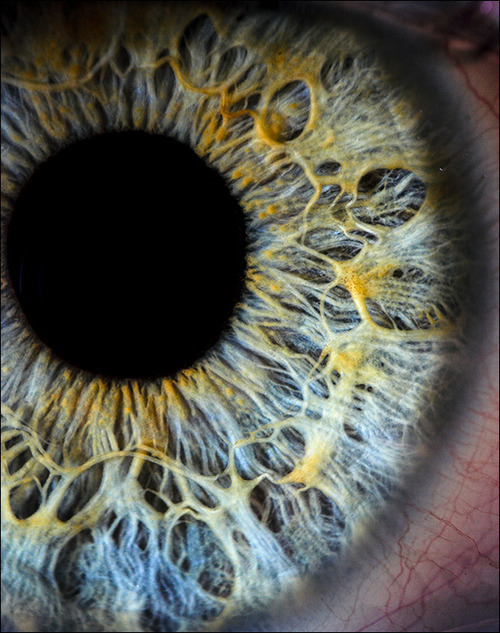
the pupil

seems to

devour light

like a black hole

it reflects no light

The folks over at NASA just featured this nifty infographic on APOD about detecting objects in the sky:
How to Identify that Light in the Sky
What is that light in the sky?
Perhaps one of humanity’s more common questions, an answer may result from a few quick observations.
Image: HK (The League of Lost Causes)
For example — is it moving or blinking? If so, and if you live near a city, the answer is typically an airplane, since planes are so numerous and so few stars and satellites are bright enough to be seen over the din of artificial city lights.
If not, and if you live far from a city, that bright light is likely a planet such as Venus or Mars — the former of which is constrained to appear near the horizon just before dawn or after dusk.
Sometimes the low apparent motion of a distant airplane near the horizon makes it hard to tell from a bright planet, but even this can usually be discerned by the plane’s motion over a few minutes. Still unsure?
The above chart gives a sometimes-humorous but mostly-accurate assessment. Dedicated sky enthusiasts will likely note — and are encouraged to provide — polite corrections.




TYPES OF COLOR-BLINDNESS
1. Normal vision
2. Deuteranopia
3. Tritanopia
4. Monochromacy - An extremely rare type of color-blindness in which sufferers can see only in shades of grey, and perceive no color at all. About 1 in 33,000 people is born with this condition.
(Source)






Class in session as Planet X starts it off with our favorite dense objects:
Neutron Stars!
http://www.space.com/22180-neutron-stars.html


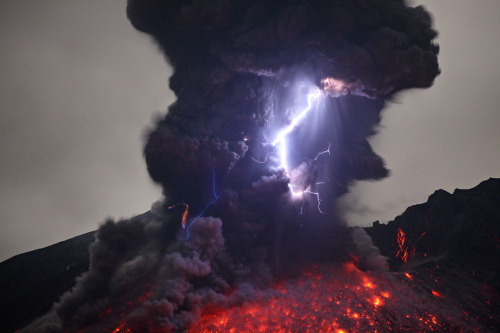
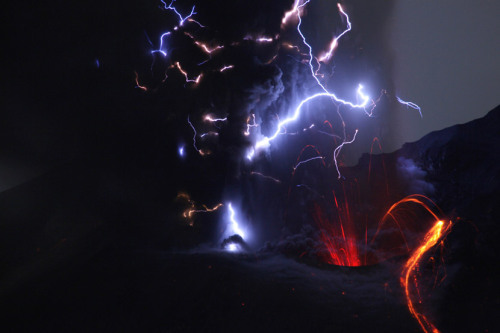
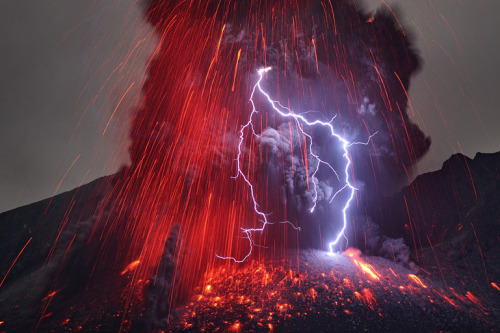
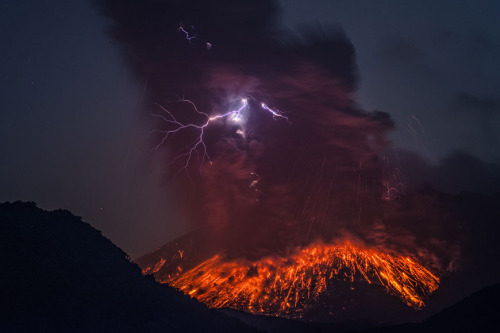
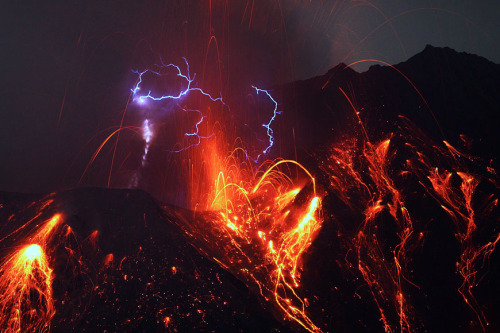

photos of sakurajima, the most active volcano in japan, by takehito miyatake and martin rietze. volcanic storms can rival the intensity of massive supercell thunderstorms, but the source of the charge responsible for this phenomenon remains hotly debated.
in the kind of storm clouds that generate conventional lightning, ice particles and soft hail collide, building up positive and negative charges, respectively. they separate into layers, and the charge builds up until the electric field is high enough to trigger lightning.
but the specific mechanism by which particles of differing charges are separated in the ash cloud is still unknown. lightning has been observed between the eruption plume and the volcano right at the start of an eruption, suggesting that there are processes that occur inside the volcano to lead to charge separation.
volcanic lightning could yield clues about the earth’s geological past, and could answer questions about the beginning of life on our planet. volcanic lightning could have been the essential spark that converted water, hydrogen, ammonia, and methane molecules present on a primeval earth into amino acids, the building blocks of life.

Baby Tortoises Show Up In The Galapagos For The First Time In Over A Century
There hadn’t been one single baby tortoise sighting in more than a century on the Galapagos Island of Pinzon, until a small group of the tiny, shelled youngsters were spotted this year.
The recent births are helping to pull the critically endangered animals back from the brink of extinction after they were nearly laid to waste as a result of human activity.
This is huge news for a species that has been struggling to survive for a century, relying on humans raising young tortoises bred in captivity until they are large enough to not fall prey to rats and predators.








What makes fireworks colorful?
It’s all thanks to the luminescence of metals. When certain metals are heated (over a flame or in a hot explosion) their electrons jump up to a higher energy state. When those electrons fall back down, they emit specific frequencies of light - and each chemical has a unique emission spectrum.
You can see that the most prominent bands in the spectra above match the firework colors. The colors often burn brighter with the addition of an electron donor like Chlorine (Cl).
But the metals alone wouldn’t look like much. They need to be excited. Black powder (mostly nitrates like KNO3) provides oxygen for the rapid reduction of charcoal © to create a lot hot expanding gas - the BOOM. That, in turn, provides the energy for luminescence - the AWWWW.
Aluminium has a special role — it emits a bright white light … and makes sparks!
Images: Charles D. Winters, Andrew Lambert Photography / Science Source, iStockphoto, Epic Fireworks, Softyx, Mark Schellhase, Walkerma, Firetwister, Rob Lavinsky, iRocks.com, Søren Wedel Nielsen

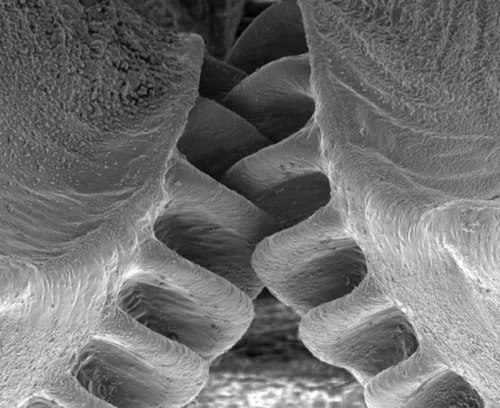
Close-Up of the First Mechanical Gear Ever Found in Nature
The biological form of a mechanical gear was observed in nature for the first time in juvenile planthoppers (Genus: Issus), a common insect that can be found in gardens across Europe.
The insect has hind-leg joints with curved cog-like strips of opposing ‘teeth’ that intermesh, rotating like mechanical gears to synchronize the animal’s legs when it launches into a jump. The finding demonstrates that gear mechanisms previously thought to be solely man-made have an evolutionary precedent.
(Continue Reading)












![Source [x]](https://64.media.tumblr.com/c67e16b83f88fe48da4656147229f385/tumblr_nz90mw4OiA1u1i4d4o1_500.jpg)
![Source [x]](https://64.media.tumblr.com/a60c74bcd55fb8555c574abb6eb4a0aa/tumblr_nz90mw4OiA1u1i4d4o2_500.jpg)
![Source [x]](https://64.media.tumblr.com/35e92a53a2e18de1283034cd6d7999ea/tumblr_nz90mw4OiA1u1i4d4o3_500.jpg)
![Source [x]](https://64.media.tumblr.com/4c1566aefd626f49bf3bfaf0c2e04616/tumblr_nz90mw4OiA1u1i4d4o4_500.jpg)
![Source [x]](https://64.media.tumblr.com/61c3673d595a1d1ddb2bd9c6d25862ae/tumblr_nz90mw4OiA1u1i4d4o5_500.jpg)
![Source [x]](https://64.media.tumblr.com/3830b9a2ede2b1021bb8596b1bc4bb6f/tumblr_nz90mw4OiA1u1i4d4o6_500.jpg)
